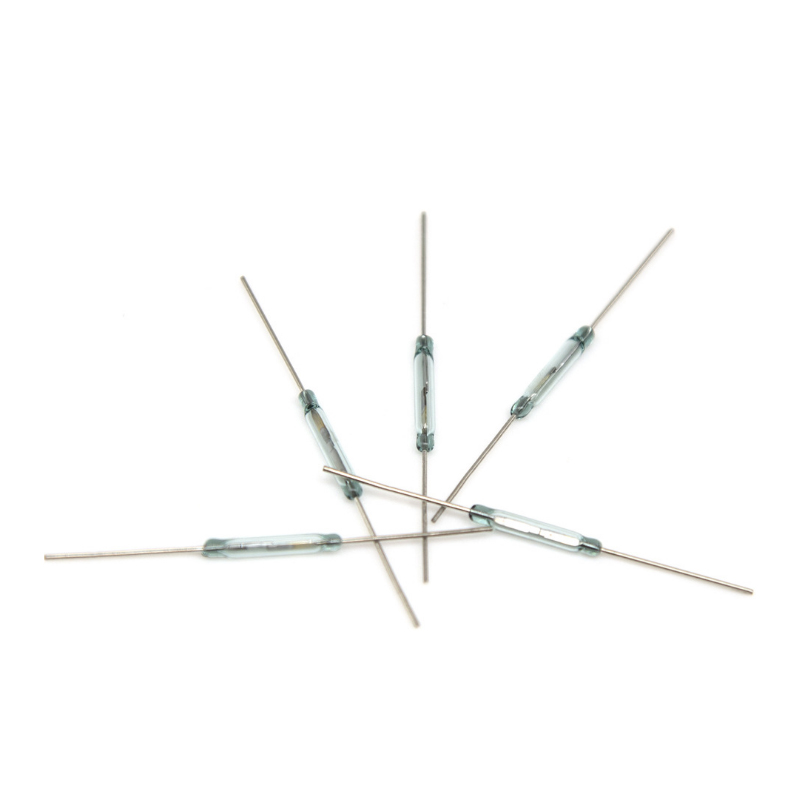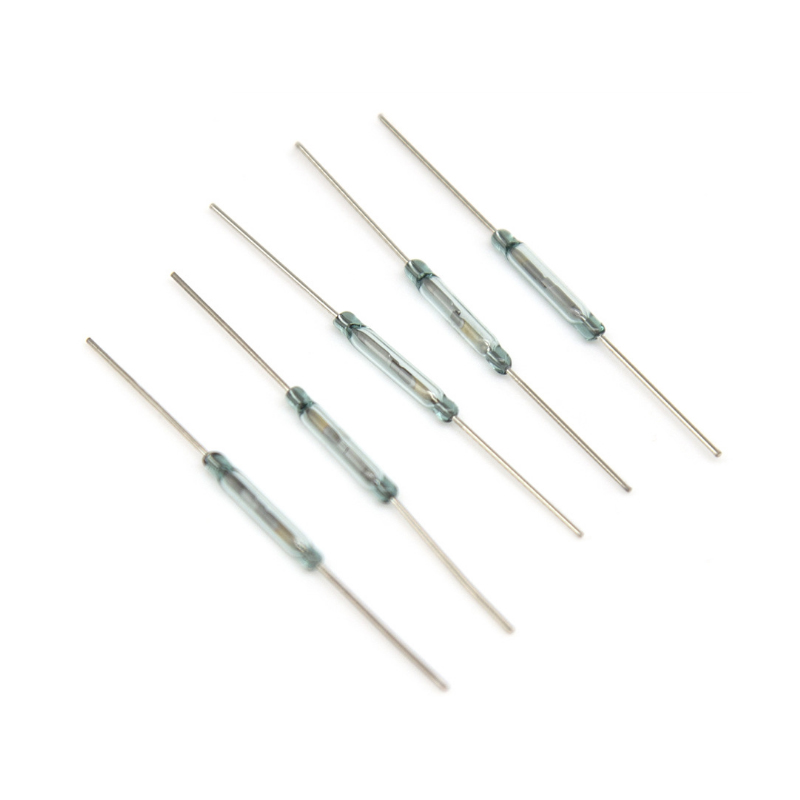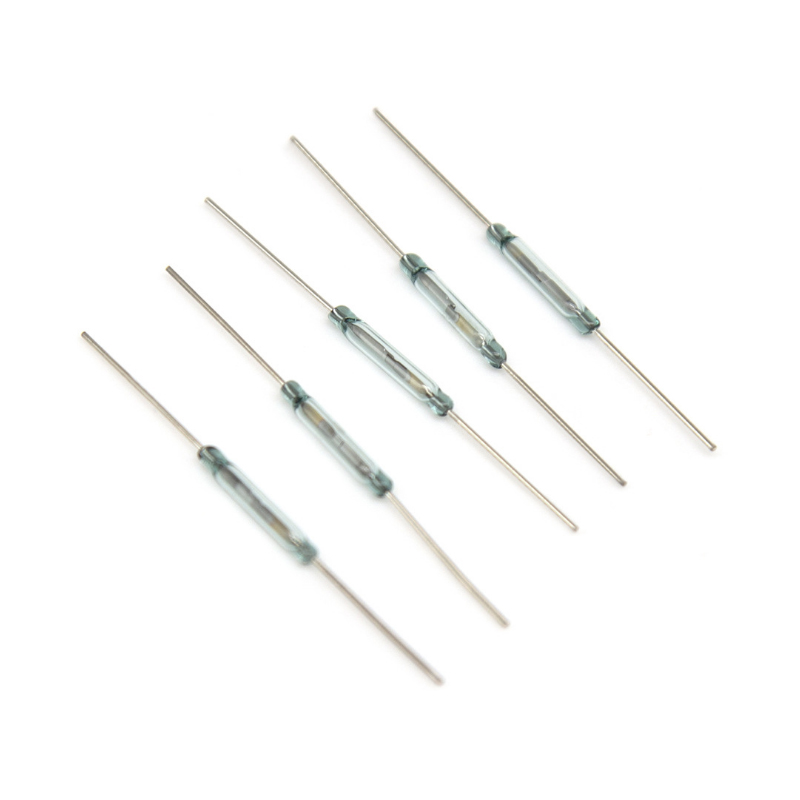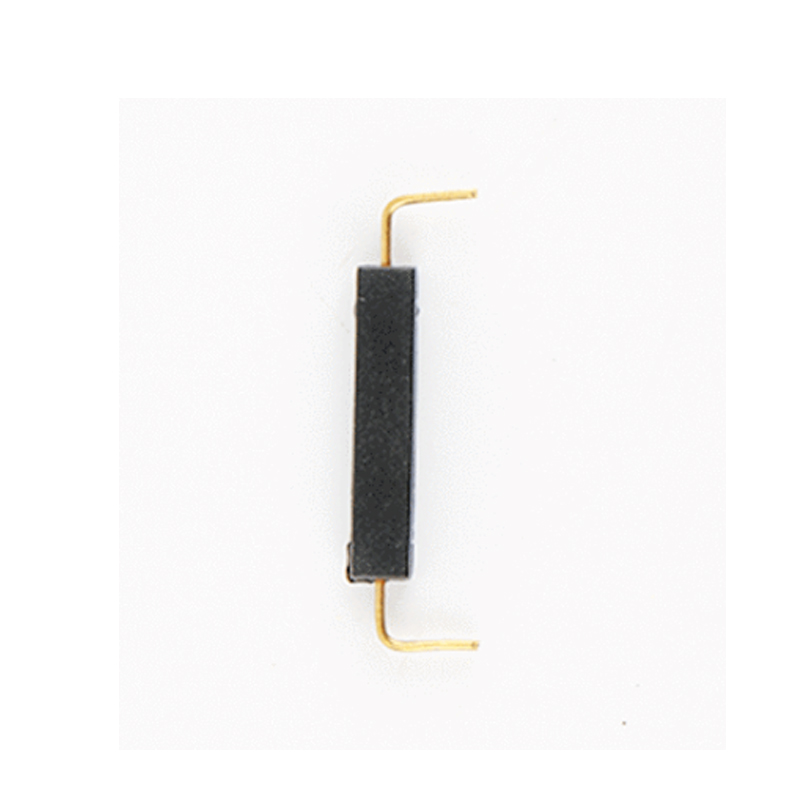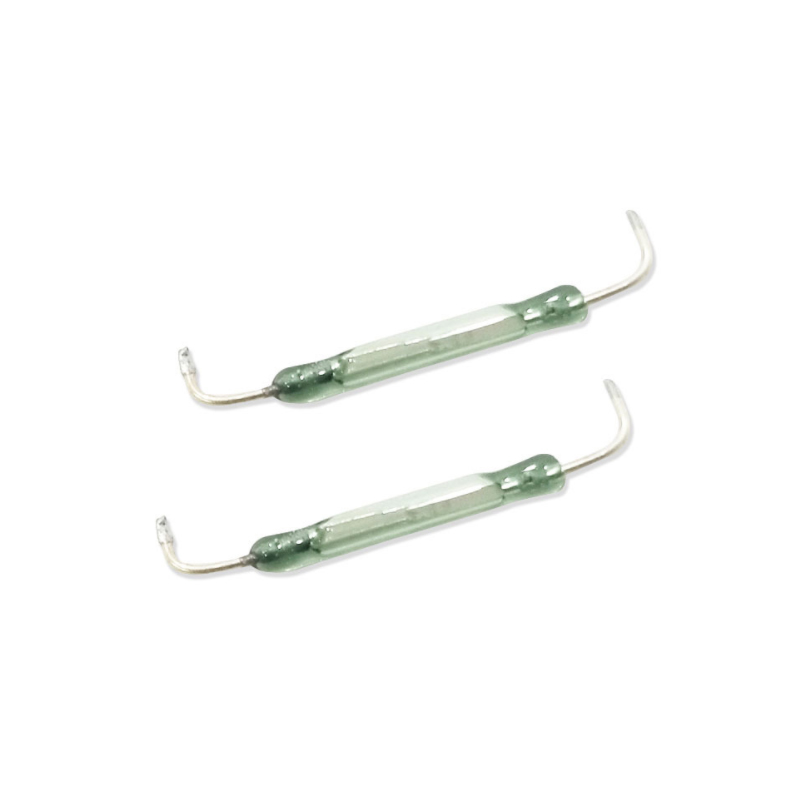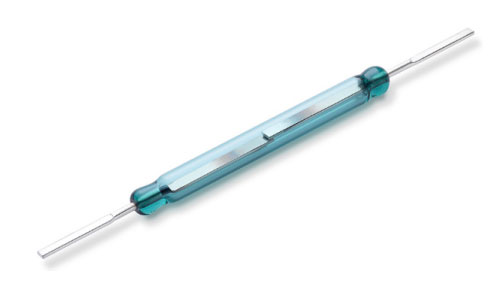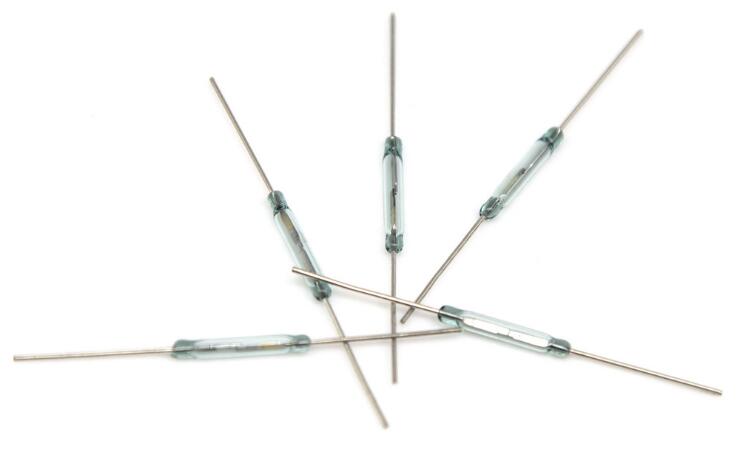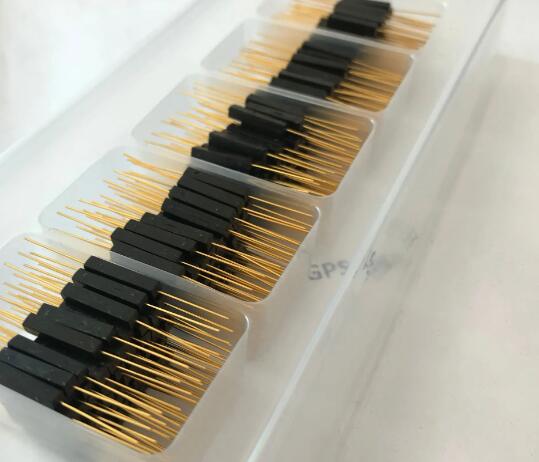About the production steps of the reed switch sensor
1. Lead wire inspection: Physical size, surface defects, and hardness inspection of nickel iron wire.
2. Spring plate pressing: Rotate and straighten the lead wire to press it into the spring plate, press the spring plate and check its physical size, flatness, and visual defects.
3. Degreasing: The spring leaves are degreased to remove grease and oil. There is a built-in cooling system in the production equipment to minimize steam loss.
4. Annealing: Dry springs with oil stains removed are annealed to soften them and reduce residual magnetism. After annealing, perform residual magnetism and hardness checks
5. Electroplating: The annealed dry spring is assembled onto the carrier and electroplated according to the required load contact specifications and differential requirements for each reed tube.
6. Thickness measurement: Several dry appreciation electroplating samples are tested for micrometer thick precious metal electroplating, and double differential testing is used for detection.
7. Baking: Bake the dry spring in a controlled gas. Burning and cleaning of organic matter on the surface.
8. Reed tube sealing: Seal and automatically assemble baked reed sheets, inert gas, and pre cleaned glass tubes through equipment
9. Lead plating: Tin plating is applied to the solderable area at the end of the yellow chip switch.
10. Reed tube testing: Specially designed testing and manufacturing equipment ensures that all major parameters of high-quality reed tubes have been strengthened for testing. A good test result indicates that the reed tube is functioning properly during inflation and sealing processes. Any reed tubes with poor test results will be rejected and reported.
11.Sorting: Measure the dry yellow tubes, sort them according to the required flexibility, static and variable contact resistance parameters for the application, and then package and transport them.





